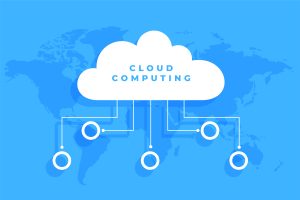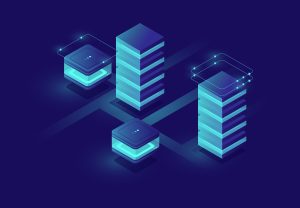IoT or the Internet of things has revolutionized the way technology affects lives. A little backstory on the concept first. The initial examples of the concept were seen in the form of a modified Coca Cola vending machine in 1982 at Carnegie Mellon University.
The appliance got connected to the Internet and had the facility to report its inventory, and whether the drinks were cold or not. This was just the beginning of the wave that came in the years ahead. The terms first came into prominence in 1999 from Kevin Ashton, a British technology pioneer.
There are various platforms that IoT works on. But the general consensus is that .net is the best and a veteran platform to develop IoT projects. The underlying thinking is that it can keep up the pace with trends in IoT development.
Let’s go through some solid reasons to choose .Net over other platforms: –
1. Windows 10 IoT Core
The availability of .net is possible thanks to Microsoft. It only makes sense for it to be fully compatible with Windows 10 IoT Core.

This is a Windows 10 based operating system released in 2015 for embedded systems. The design was structured to be run on low power mass-market devices.
Raspberry Pi 2&3, Dragonboard 410c, and MinnowBoard MAX are the prime examples of these devices.
.Net will aid the development of great IoT apps for Windows 10 IoT. All thanks to Universal Windows Platform, Visual Studio and Azure Cloud Platform, which in turn promises a smooth user experience.
2. Large .Net Community
Every brand, platform, and service thrives on a large community. Web developers of IoT can boast about an extremely helpful .Net community.
Numbers of more than 2 million, every single one is ready to share their experiences and observations. Anything that can help to solve any challenging issue that might crop up in the development process.

This huge global community with real-world experiences help amateur developers with solutions ready for any problem they may face while beginning their journey in this field. Github and StackOverflow are some of the most popular online hanging spots for this community.
In addition, there are official .net and ASP.NET communities from Microsoft, and @dotnet too to get much-needed advice, suggestions, and solutions from experienced professionals.
3. Readymade Solutions
Automatic and readymade solutions are the flavor of technology that everyone loves. Dot net helps any website development by offering readymade solutions.
These solutions are helpful for any IoT issue. The Internet continually sees coding issues or problems getting resolved. It means that if you are having issues with your IoT solutions, then someone has already resolved it and posted it online on GitHub or Bitbucket.
You are too free to copy and paste the code. Experts opine that .net community is a pretty big one and one that offers a great amount of reusable code.
DotNet Framework class library combined with these solutions can accelerate any IoT development.
4. Microsoft Azure
Microsoft offers Azure IoT platform and IoT accelerator with recovery, and data storage. Due to reasons like these, the platform gets acknowledged as one of the best enterprise-class platforms in existence today.

It has provided great working for IoT user functions.
In addition, the security, flexibility, analytics, and interoperability prove to be essential features for IoT development that are found in Azure.
Due to these much-needed factors, the platform guarantees a clear position in the clouds and all it will take is the effort of a few clicks. The team at Microsoft is at work to add the latest beneficial features and essential updates supply.
5. ASP.NET Core
This is a popular and free open-source, cross-platform web framework. This had pushed it as a favorable option for .NET developers who use this framework to create compelling online and IoT applications with much ease.

ASP.NET Core in addition to Windows 10 IoT has full capability to develop useful applications or services that will run in the background of any IoT device. The framework offers rich and variety of programming languages like F#, C#, and Visual basic.
Not just but it provides the top needs for any IoT project, which are quick deployment, security, top performance, and stress-free cloud integration.
You can select any cloud platform like AWS, Microsoft Azure, or Google Cloud IoT with ASP.NET core due to its effortless ease in getting set up in a cloud.
If the .NET developers can use ASP.NET to set up the app with the same .NET runtime as used in the development, then chances of developing bugs because of environmental differences get reduced.
6. Machine Learning Framework ML.NET
The amount of data is growing exponentially on account of the astronomical rise in the connected devices witnessed globally. Experts have weighed in on the solutions to handle these huge chunks of data.
In this direction, a study was published in the International Journal of Distributed Sensor Networks proposed in the development of a context-aware system in IoT with the use of Bayesian probabilistic models.

The system is fully capable of collecting raw sensor data from the devices into knowledge by collecting, modeling, and reasoning the context to help deduce new knowledge for connected devices.
The amount of data will only grow and context awareness will be of primary importance. It will help decide what data to process and what data should not. ML.NET (Machine learning framework), especially for .NET developers, allows a library called Infer.NET for running Bayesian probabilistic programming with the aim to bring context-awareness in your IoT applications.
Conclusion
One thing is sure if you are living in the 21st century. IoT is and is only going to become a bigger tool in everyday life and the path of success for many companies. After all, it has brought increased yield, quality, and efficiency.
There are much innovation and global adoption of this technology but also its unique set of challenges. The ever-growing .NET community promises to use one of the most efficient platforms to solve many of these challenges plaguing the IoT industry.






